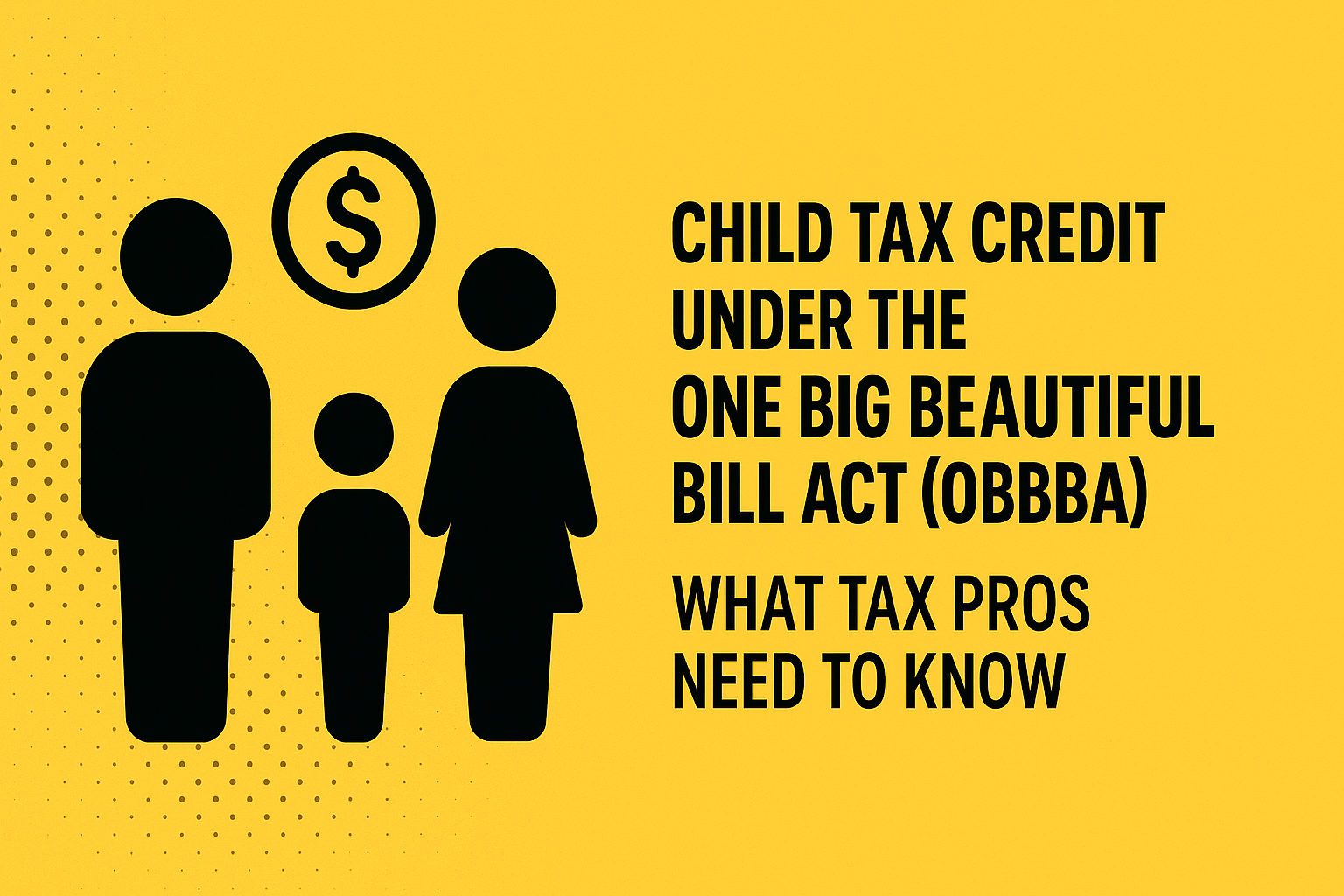Explore the latest updates to the Child Tax Credit under the One Big Beautiful Bill Act (OBBBA). Learn how limits, refundability, phase‑outs, and eligibility rules have changed—and what that means for planning clients. With insights tailored for AI tax research and AI tax planning tools, this post helps professionals stay ahead. (Internal link to your AI planning tool or demo page).
Introduction
The One Big Beautiful Bill Act (OBBBA), signed into law on July 4, 2025, substantially overhauls the Child Tax Credit (CTC) for tax years beginning in 2025. For tax pros using AI tax planning tools and agentic AI in tax, understanding how the CTC changes is crucial for modeling tax outcomes and optimizing client strategies.
What Changed in the Child Tax Credit?
1. Credit Amount and Inflation Indexing
- The maximum non‑refundable CTC rises from $2,000 to $2,200 per qualifying child beginning in 2025, and the amount will be indexed for inflation moving forward.
- The refundable portion of the credit also increases modestly to approximately $1,700, though it remains limited and not fully refundable.
2. Eligibility Rules Tightened
- To qualify, both the taxpayer and spouse (if filing jointly) must now have work-eligible Social Security numbers. This stricter requirement disqualifies many children in mixed-status households, potentially affecting millions.
3. Phase-Out Adjustments
- The credit phase-out thresholds and phase-in rules remain similar to prior law but may adjust with inflation indexing. Specific phase-out income limits have not changed dramatically, but exact thresholds should be monitored each year.
How OBBBA’s CTC Changes Impact Families
Advantages for Middle‑Income Taxpayers
- Families with qualifying children receive a $200 increase per child. Those claiming the refundable portion may see incremental refund gains.
- AI-powered tax projections can automatically model these increases when integrated with up‑to‑date credit thresholds.
Disadvantages for Low-Income or Mixed‑Status Households
- Because the refundable credit remains capped and strict SSN requirements are enforced, many lower-income families—even those with U.S. citizen children—may receive less benefit or none at all.
Why This Matters for AI Tax Research and Planning Tools
- AI tax research tools must incorporate new parameters: updated credit amounts, refund limits, eligibility logic, and SSN requirements.
- AI tax planning tools (especially those driven by agentic AI in tax) can proactively suggest strategies, e.g., advising clients on qualifying children, timing income recognition, or managing SSN eligibility.
- These tools can also help identify clients likely to lose eligibility and propose alternate benefits like education credits or adoption credits that the OBBBA also updated.
Best Practices for Tax Pros Using AI Tools
| Step | Recommendation |
| 1. Update credit database | Ensure your AI tool reflects the new $2,200 credit cap, $1,700 refundable cap, and indexing rules. |
| 2. Model eligibility constraints | Include logic for work-eligible SSNs and ensure you can identify mixed-status households. |
| 3. Simulate outcomes | Use agentic AI tools to run tax projections across multiple scenarios (e.g. income, number of children, eligibility). |
| 4. Flag high-risk clients | Identify families who may lose the CTC and recommend alternatives like the child and dependent care credit or adoption credit. |
| 5. Stay updated | Use AI tax research to monitor IRS guidance or changes to inflation adjustments and phase-out thresholds. |
Conclusion
The One Big Beautiful Bill Act marks a significant shift in the Child Tax Credit regime—upping the cc to $2,200 per child, indexing for inflation, and tightening eligibility rules. For tax and financial professionals, especially those leveraging AI tax planning tools and agentic AI in tax, updating your systems to reflect these changes is essential.
Try our AI tax tool today or book a free demo and see how you can serve your clients with confidence, accuracy, and speed.

